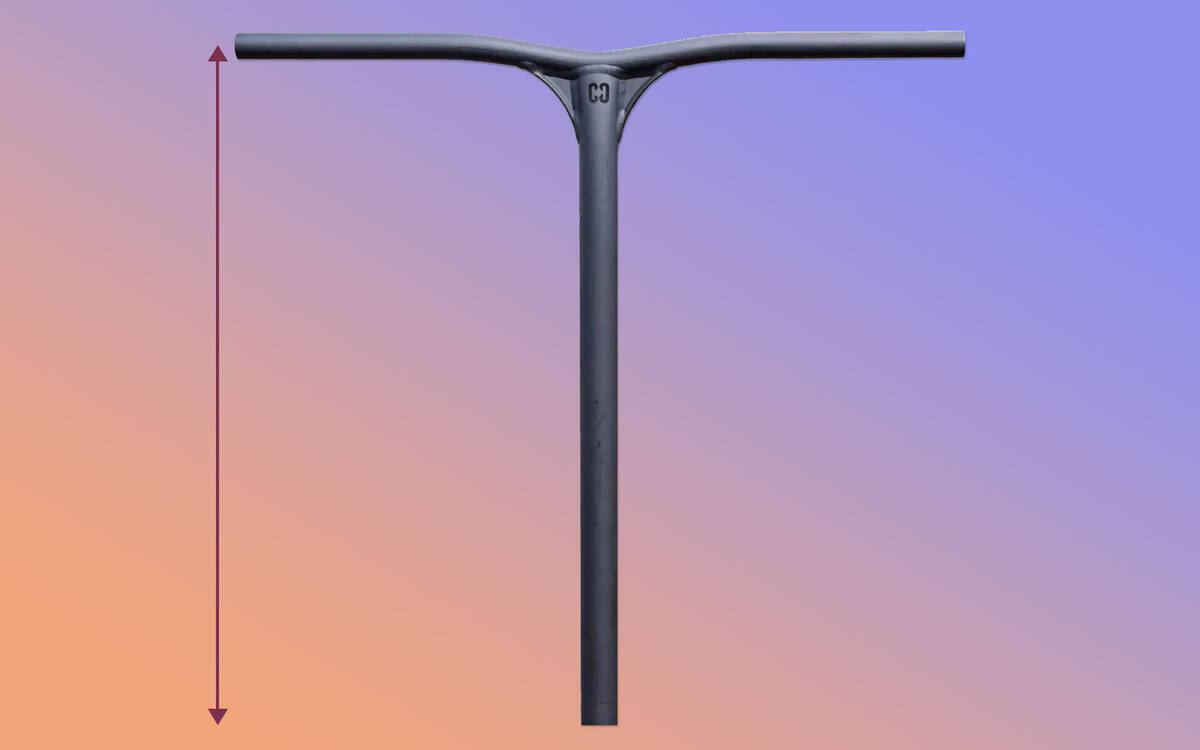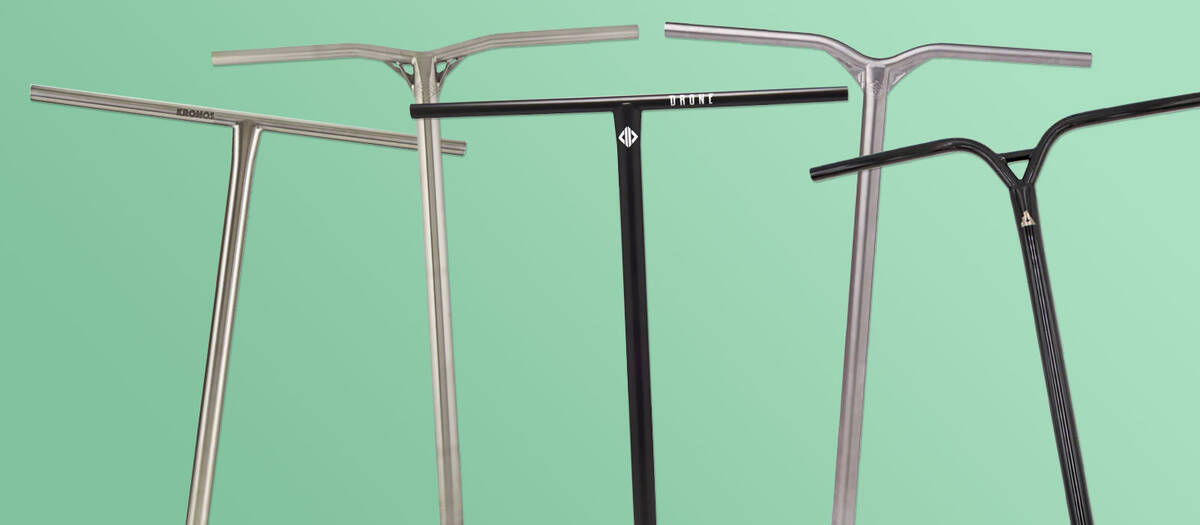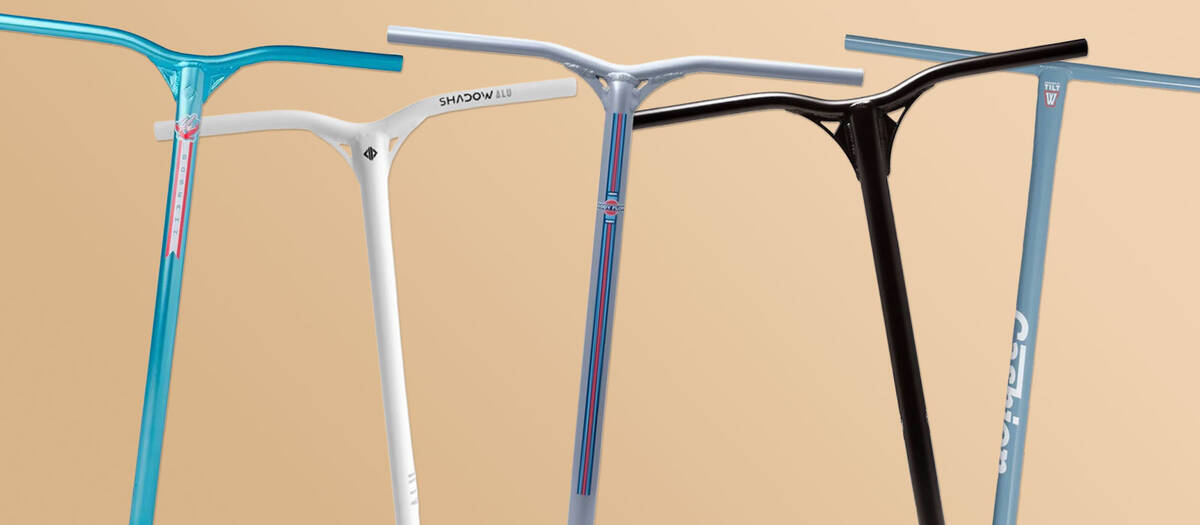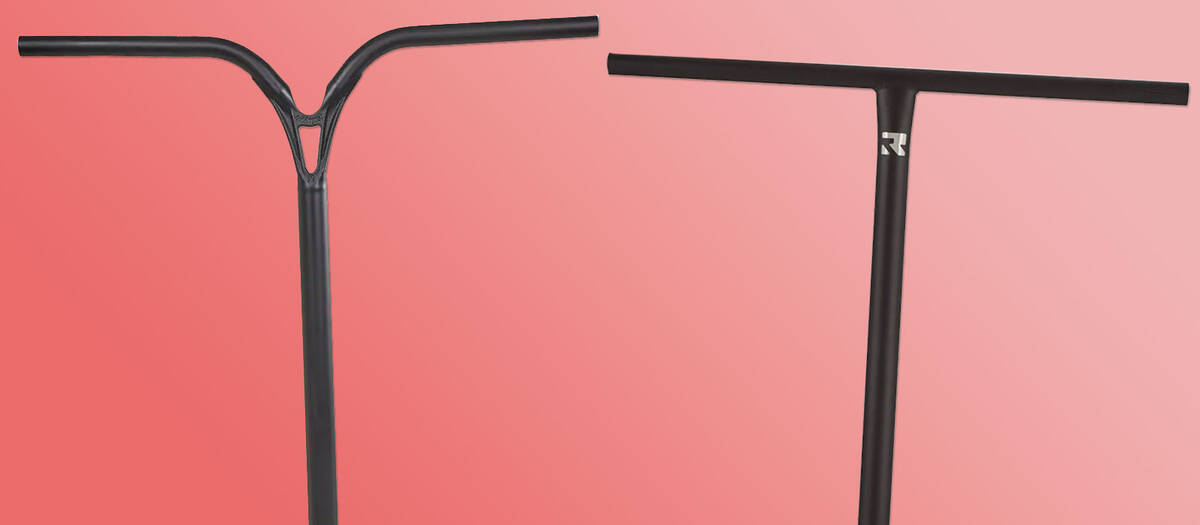Guide to Purchasing Stunt Scooter Bars
We'll address any queries you may have prior to purchasing a new stunt scooter bar. You'll gain insight into key considerations such as bar height, compatibility, and the material used in the bar. It's time to enhance your scooter with the finest bar available!
Overview
Overview
Determining the Perfect Height for Your Scooter Bar

The height of a stunt scooter bar is crucial when choosing the right bar. It significantly impacts your riding style and comfort, so giving careful consideration to bar height is advisable.
Initially, bar height is largely subjective. However, for new riders who haven't yet established personal preferences, there are guidelines available to simplify selecting the correct bar height.
So, what is the ideal height for scooter bars? In a perfect world, the bars of a stunt scooter should fall between your hips and navel when standing on the ground with the scooter deck positioned between your feet. This height ensures comfort and optimal leverage for executing tricks. With the bars at this height, you can maintain a straight back and still have sufficient leverage. If you're new to scooting and uncertain between two bar heights within the suggested range, we recommend choosing the taller option as it generally provides better control.
Should you be considering going bigger or smaller when buying new scooter bars, or if you're unsure whether to select a taller or shorter variant, this table might prove useful.
| Aspect | Taller Bars | Shorter Bars |
|---|---|---|
| Comfort | Less strain on the back due to a more upright posture | Requires the rider to lean forward, possibly causing increased strain on the back |
| Tricks | Greater control during grinds and manuals | Enhanced control for aerial manoeuvres |
| Stability | More stable | More agile and responsive |
| Style | Street (generally speaking) | Park (generally speaking) |
Measuring the Height of Scooter Bars
When buying a scooter bar, you'll see the height stated in the product details. However, this figure alone doesn't fully reflect how tall your scooter will be once the bar is fitted.
For an accurate measure of your scooter's complete height, start from the bottom of the front wheel to where the bottom of the scooter bar will be positioned once mounted. This location varies depending on your scooter's compression system.
Steps to obtain the total scooter height:
- SCS: Measure from the bottom of the front wheel to the centre of the clamp. Add this measurement to the bar height to get the total scooter bar height.
- HIC/IHC/ICS: Measure from the bottom of the front wheel to the bottom of the clamp. Combine this measurement with the bar height to know the total scooter height after installing the new bar.
For additional details, do not hesitate to reach out. Here are a couple of valuable links:
Selecting the Appropriate Width for Your Scooter Bar

When deciding on the width of your scooter bar, aligning the width of the bar with your shoulder width is recommended. Measure from shoulder to shoulder, then add an inch or two for comfort. This approach helps in finding a bar width that doesn't cause discomfort. Bars that are too narrow might seem awkward and could lead to discomfort in your wrists and shoulders. On the other hand, excessively wide bars can impede your ability to perform certain tricks, with your hands being too far apart also causing discomfort in your shoulders and wrists.
If uncertain about selecting a narrower or broader scooter bar, consider the following factors:
- Wider bars: More stable and easier to catch
- Narrower bars: More agile and easier to spin
Scooter Bar Diameter: Differences Between Oversized and Standard Bars

Scooter bars come in either standard or oversized diameters:
- Standard: 32 mm outer diameter / 28 mm inner diameter
- Mix: 35 mm outer diameter / 28 mm inner diameter (predominantly aluminium bars)
- Oversized: 35 mm outer diameter / 32 mm inner diameter
The primary difference between standard and oversized scooter bars is their weight and durability. Generally, oversized bars tend to be slightly stronger and heavier, whereas standard-sized bars are lighter and somewhat weaker.
Aluminium bars present a unique case, as they require additional material to offer adequate strength for demanding use. Most aluminium bars available come with a 35 mm outer diameter and a standard 28 mm inner diameter.
Ensuring Scooter Bar Compatibility
When purchasing a new scooter bar, ensuring it is compatible with your existing setup is vital. You can verify a scooter bar's compatibility by checking its technical details to determine the supported compression system.
- With an SCS setup, ensure that the bar lacks a slit - an SCS adapter can be utilised to remove the slit
- If a standard-sized SCS clamp is used, your bar should have a standard outer diameter
- For an oversized SCS clamp and if you wish to use a standard-sized SCS bar, a suitable SCS clamp shim is necessary
|
Compression System |
Standard Bars 32 mm outer diameter 28 mm inner diameter |
Oversized Bars
35 mm outer diameter 32 mm inner diameter |
Aluminium Bars 35 mm outer diameter 28 mm inner diameter |
|---|---|---|---|
|
SCS Scooter Bars |
Compatible if:
|
Compatible if:
|
Compatible if:
|
|
HIC Scooter Bars |
NOT COMPATIBLE |
Compatible if:
|
NOT COMPATIBLE |
|
IHC Scooter Bars |
Compatible if:
|
NOT COMPATIBLE |
Compatible if:
|
If you are operating an SCS-setup and favour a bar with a slit at the base, an SCS Sleeve (or SCS Bar Adapter) in our Scooter Compression category is a solution, yet many HIC or IHC bars come with an SCS adapter. Explore the options here:
We offer several guides pertinent to pro scooter compression and part compatibility, ensuring you find answers to your questions within these guides:
Titanium Scooter Bars

Titanium bars offer the lightweight nature of aluminium bars with the strength of steel bars. Hence, they have gained popularity among seasoned scooter enthusiasts. The principal reason for opting for a titanium bar is its impressive strength-to-weight ratio. Issues with bars breaking during intense riding sessions are unlikely, and their lightweight nature won't constrain your performance.
Titanium bars are more expensive compared to their chromoly or aluminium counterparts, and the additional resources needed to produce them contribute to their higher price.
Riders new to titanium bars often find their flexibility surprising. Initially, it may feel different, but this attribute can support your riding style. With time, the flex in titanium bars becomes advantageous, helping manage some of the impact you feel during heavy landings.
Unlike steel or aluminium bars, titanium bars don't gradually weaken and bend when they eventually wear out; they can snap. Therefore, if you observe wear on your titanium bars (usually after years of heavy use), replacing them is recommended.
Advantages:- Durable
- Lightweight
- Flexibility
- High Cost
- Flexibility (not preferred by some riders)
- Higher risk of snapping upon breakage.
You can filter our bar selection by material to view all titanium options:
Aluminium Scooter Bars

Stunt scooter bars made from aluminium are valued for their low weight, beneficial for riders prioritising agility and control. Aluminium bars' lightness aids in performing complex airborne tricks and manoeuvres. Moreover, they are often more economical, making them an attractive option for those seeking trick-friendly bars at a lower cost.
The lessened strength of aluminium bars is however a drawback, as they are more prone to bending or breaking than steel or titanium variants. To mitigate this vulnerability, aluminium bars frequently incorporate reinforcing elements like gussets or wedges at welding points, boosting their structural strength.
Advantages:- Lightweight
- Budget-friendly
- Less robust
- Stiff / lacking flexibility
To explore our range of aluminium bars, please filter the category by material:
Chromoly Scooter Bars

Steel stunt scooter bars, commonly referred to as chromoly bars, are highly regarded for their exceptional durability and cost-effectiveness. However, they tend to be heavier than bars crafted from alternative materials.
In contrast to aluminium bars, which frequently use gussets or Y-shaped designs for enhanced strength, chromoly bars can be genuinely T-shaped owing to the material's inherent strength.
Steel bars are often found in street setups, even utilised by professional stunt scooter riders. Not everyone prioritises ultra-lightweight configurations, making chromoly stunt scooter bars a dependable option for both novices and seasoned professionals!
Some chromoly scooter bars employ butted tubing to reduce some of the additional weight. This entails making certain sections of the bars thinner to decrease the overall weight while preserving strength. Chromoly bars are ideal for beginners, and there is a chromoly bar suitable for every compression system.
Advantages:- Robust
- Strong
- Cost-effective
- T-shape
- Heavyweight
Explore our selection of scooter bars and filter by material to view all our chromoly stunt scooter bars:
Choosing Between Y-Bars and T-Bars for Stunt Scooters

T-bars and Y-bars are named after their unique shapes. Ultimately, the choice between them is a personal one, with neither being definitively superior.
T-bars are often seen as slightly weaker because they do not incorporate gussets or braces to enhance the connection between the handlebars and the down tube. Therefore, T-shaped bars are usually crafted from steel or titanium.
Conversely, Y-bars incorporate reinforcements, which make them marginally stronger. As a result, aluminium bars are often designed in a Y-shape.
The decision to choose T-bars or Y-bars is generally influenced by various factors, including aesthetics, personal preference based on the feel when in use, and how they align with a rider's unique style or identity. Ultimately, both types have distinct advantages and cater to different rider preferences.
Backsweep & Upsweep
Backsweep refers to the angle of the handlebar towards the rider, while upsweep describes the upward angle of the bar. These elements significantly affect the ergonomics of scooters, ensuring a more relaxed and natural wrist position.
Backsweep and upsweep are usually features of Y-shaped bars, whereas T-shaped stunt scooter bars focus on simplicity and a straightforward design.
Check out our stylish Y- and T-shaped bars:
